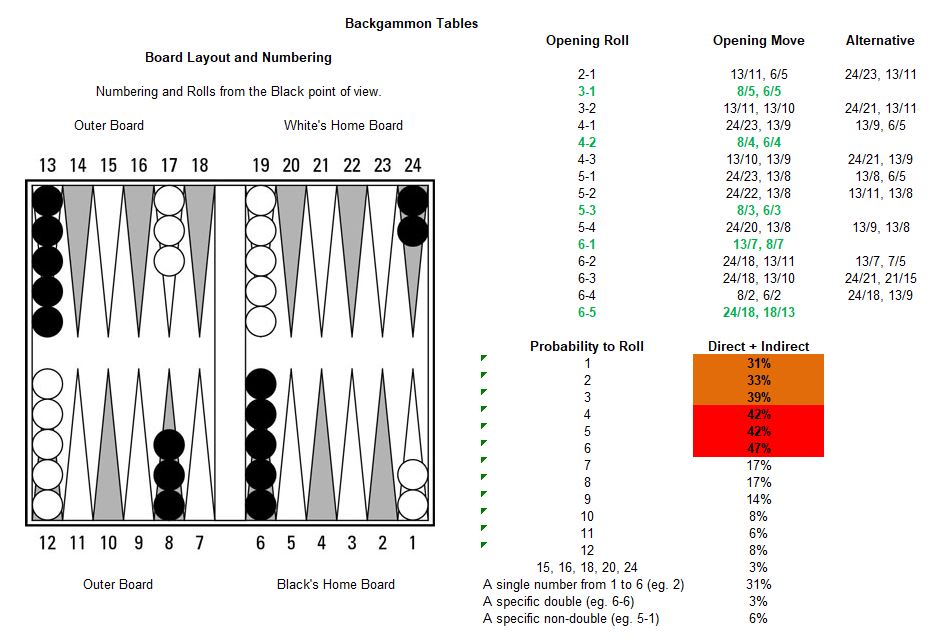Last updated on December 6, 2025
Backgammon is a popular game, and because of its rise in popularity, there are tons of guides and strategies out there. While it’s great to have some strategies in your back pocket, they can also confuse players who are just starting out. This guide is all about plays to avoid in backgammon. One common mistake is adopting a single strategy and using it for the entire game, only to end up disappointed when it doesn’t work.
What separates good players from average ones isn’t just knowing a bunch of strategies. It’s about knowing when to use them and which one fits the situation. A move that looks perfect right now could end up hurting you later in the game. The key is timing, not just memorising different plays (Backgammon strategies at The Spruce Crafts).
One of the biggest mistakes beginners make in Backgammon is rushing to move their checkers into their home board too soon. It might feel like a smart move when you roll a big number, but it can backfire. Moving a checker too early often leaves it exposed as a blot, which is an easy target for your opponent. If your checker gets hit, your opponent now has an anchor, and you haven’t even set up your other checkers properly yet. Your strategy for moving checkers and bearing off should align with the overall plan you’ve set for the whole game, not just with a single roll (Common beginner’s mistakes in backgammon at Nextgammon).
Keep calm
Another common issue in backgammon is playing too cautiously. Some players hesitate to leave a checker in a spot, afraid it will get trapped or hit. Sure, there’s a risk, but you can’t win if you play it safe all the time. Taking chances is part of the game. Just keeping your checkers grouped together won’t get you anywhere, and it certainly won’t put pressure on your opponent. It’s important to assess the game’s progress and compare it with your strategy to figure out whether it’s worth leaving a checker exposed. With time, you’ll get better at balancing risk and reward.
For some players, panic sets in, especially when playing for money or in high-pressure situations. It’s not unusual for someone to get rattled when their opponent rolls big consecutive numbers and starts moving checkers into their home board. In these situations, some players might feel the urge to break up their anchors and make moves just for the sake of doing something. But that’s exactly what you want to avoid. Anchors play a critical role in your defensive strategy. They serve as backup points to re-enter your checkers if they get hit, and they can also slow down your opponent’s progress. It’s better to hold onto your anchor as long as possible, even if your opponent seems to be getting ahead (Common mistakes to avoid at Manopoulos).
If you do get a big roll, it can be tempting to go after your opponent’s checkers right away. But attacking recklessly can mess up your strategy. If you do decide to hit, aim for the opponent’s 5-point, since it’s often a vulnerable spot. But if they have checkers deeper in their home board, those are better targets because they’re harder to get out.
Everyone starts somewhere, even the best players. They all made mistakes along the way, and they got better by learning from them. By avoiding some of these common missteps, you’ll improve your game and become more skilled at Backgammon.
Tips to play smarter
To avoid common mistakes, here are a few things you can keep in mind:
- Don’t rush to bear off: Moving checkers into your home board too early is tempting, but resist the urge. Set up your position properly first, and only move checkers closer when it’s safer.
- Take calculated risks: Being too cautious won’t get you anywhere. Take risks, but make sure the situation is right. Analyse your board and weigh the risk before making a move.
- Keep your anchors: Don’t get too eager to break your anchors when your opponent starts gaining momentum. Keep them in place as long as possible, as they are a safety net for you.
- Attack strategically: Don’t just hit checkers because you can. Look for opportunities where hitting will be most beneficial, like when your opponent’s checkers are on vulnerable points.
- Learn from mistakes: Everyone makes mistakes, especially when starting out. The key is to learn from them, adjust your strategy, and improve over time.
Summary
By following these guidelines, you’ll learn the plays to avoid in backgammon. Ignore these common beginner mistakes and set yourself up for success. It’s all about staying patient, playing strategically, and always being aware of your opponent’s moves. And, of course, don’t forget to have fun along the way!
Related content
Improve your backgammon at UKBGF

Consider all your options before making a move. SOmetimes the best move it the one you don’t immediately see.